Garlic Fresh, Powder, or Granulated: Which to Pick?
Fresh garlic brings a vibrant, pungent quality to dishes that many home cooks adore.
The aromatic cloves offer an unmistakable flavor profile that transforms ordinary meals into culinary delights.
Most professional chefs prefer fresh varieties for their robust character and bright notes.
Dried alternatives like garlic powder provide convenience when time constraints make peeling and chopping impractical.
Granulated options fall somewhere between these two, offering texture without the preparation hassle.
The distinctive smell of each type can transport you to Italian kitchens or Mediterranean coastlines with just one whiff.
These flavor enhancers might seem interchangeable, but each has specific uses where it truly shines.
The next sections will reveal exactly when to use each form for maximum impact in your recipes.
The Garlic Overview
Garlic stands as a cornerstone in kitchens worldwide, lending its distinctive punch to countless dishes across different food traditions.
Home cooks and chefs alike have reached for this humble bulb for thousands of years, making it one of the most essential ingredients in global cuisine.
The Origin Of Garlic
Garlic, a flowering plant from Middle Asia with possible origins in West China, has been valued for centuries. Ancient Sumerians discovered its medicinal properties around 2600-2100 BC before introducing it to China.
This versatile plant serves as an herb, spice, and vegetable in many cuisines worldwide. Gardeners appreciate how easily garlic grows in temperate climates year-round without demanding special care or complex growing techniques.
The hardy bulbs adapt well to various environments, making them accessible for home gardens and commercial farms alike. Their distinctive flavor and aroma have made them essential ingredients in countless dishes across different cultures.
Garlics Usage
Fresh or Powdered: Choosing the Right Garlic for Your Dishes
Garlic comes in several forms for home cooks to enjoy. Fresh garlic and garlic powder are the most common ones.
Each type has its own place in the kitchen, so your recipes always have the right garlic punch without any fuss or extra time spent peeling cloves when you're in a hurry to get dinner on the table.
Fresh Garlic
Garlic bulbs typically contain 10-20 cloves in various sizes, which can be easily separated as needed while keeping the remaining ones intact. Even the smallest clove carries intense flavor that can dramatically change how your dish tastes, which is why recipes usually call for modest amounts as seasoning.
You should peel and chop garlic before frying, sautéing, or fermenting it, though raw garlic offers a spicier, more potent taste that works wonderfully in dressings, dips, and sauces.
Garlic Powder
Garlic powder comes from simply dehydrating or drying fresh garlic cloves, making it completely natural despite what some people believe. You'll appreciate how this time-saving option adds real garlic flavor without the peeling, chopping, and sticky fingers.
A small sprinkle delivers consistent taste to soups, marinades, and rubs when fresh cloves aren't available or practical.
Granulated Garlic
Granulated garlic is dried garlic that has been ground into small, coarse granules, resembling coarse sand or small grains. It’s more coarse than garlic powder but finer than minced garlic.
Granulated garlic is commonly used as a convenient seasoning to add garlic flavor to dishes without the moisture of fresh garlic. It’s ideal for rubs, marinades, sauces, soups, and seasoning blends.
Fresh vs Powder vs Granulated: Garlic Compared
Garlic lovers have three main options when cooking with this flavorful bulb. Check this table for the quick comparison about fresh garlic, garlic powder, and granulated garlic.
| Feature | Fresh Garlic | Garlic Powder | Granulated Garlic |
| Making Process & Texture | Raw, whole cloves with crunchy texture. No processing. | Dehydrated, finely ground to a powder; dissolves easily in liquids. | Dehydrated, coarsely ground; granular texture like sand, dissolves slower. |
| Taste & Smell | Subtle, slightly sweet; releases strong sulfur compounds when cut. Odorless until cut. | Very pungent, concentrated flavor; low odor. | Sharper flavor than fresh but milder than powder; stronger aroma than powder. |
| Culinary Uses & Texture Change | Versatile; retains texture in dishes. Used fresh in dressings, sautés, roasts, sauces. | Ideal for quick cooking; intense flavor; good for marinades, rubs, sauces; heat-resistant. | Good fresh garlic substitute; adds some texture; used in stews, rubs, soups; less clumping. |
| Price & Availability | Least expensive, widely available fresh. | Most expensive due to fine grinding; common in stores. | Cheaper than powder but rarer to find in markets. |
| Shelf Life | 3–5 months in cool, dry, dark conditions; prone to sprouting and spoilage. | 2–3 years at room temperature when stored properly; very long-lasting. | Similar to powder; 2–3 years shelf life at room temp. |
| Nutritional Content | Highest nutrient content; rich in vitamins and minerals; raw enzymes intact. | Lower nutrient levels due to drying; retains vitamin B6 and iron; antibacterial benefits. | Similar to powder but slightly higher calories; retains some nutrition and calories (~300 kcal/100g). |
Making Process And Texture
Raw garlic comes straight from the ground without any changes, giving you that distinct crunch when chopped or crushed. Garlic powder takes a different route, going through a drying process before being ground into a fine dust that mixes well into sauces and dressings.
Between these two options sits granulated garlic, which has a sandy feel because it's not ground as finely as powder. The texture differences really matter in cooking - raw garlic adds bite and chunks, powder blends away completely, while granules take a bit more time to incorporate into your dishes.
Taste And Smell
Whole cloves offer a sweet, subtle taste until they're cut - that's when sulfur compounds escape and create an intense burst of flavor. For quick seasoning, garlic powder delivers a pungent kick that spreads through food rapidly.
Between these two options sits granulated garlic, which provides a sharper taste than fresh cloves but doesn't pack the full punch of powder. Most people don't realize whole garlic remains virtually odorless while intact.
Once chopped or crushed, its signature aroma emerges, though not as strongly as the more pronounced smell of granulated garlic. Garlic powder, surprisingly, has the mildest scent despite its concentrated flavor, making it perfect for dishes where you want taste without overwhelming aromatics.
Culinary Uses And Texture Change In Foods
Fresh garlic enhances meals in several ways, giving your cooking a major boost. Garlic powder works well for dry rubs and seasoning blends where texture matters.
Minced garlic from jars saves precious time during busy weeknights without sacrificing that classic flavor. Roasted garlic adds a sweet, mellow taste perfect for spreading on bread or mixing into mashed potatoes.
Garlic salt combines two essential seasonings for quick flavor when you're in a hurry. Black garlic brings a complex, almost balsamic richness that makes ordinary dishes feel special.
The right garlic product at the right moment can transform simple recipes into memorable meals that everyone raves about.
Price And Availability
Fresh garlic is generally the most affordable and widely available form of garlic in markets globally. Garlic powder tends to be the most expensive among the three, mainly because of the fine grinding process required.
Granulated garlic is usually less costly than garlic powder but is less commonly found in stores.
Shelf Life
Fresh garlic can last between 3 to 5 months when stored in cool, dry, and dark conditions but is prone to sprouting and spoiling over time. In contrast, both garlic powder and granulated garlic have a significantly longer shelf life, lasting 2 to 3 years at room temperature if stored properly, primarily due to their low moisture content.
Nutritional Content
Fresh garlic retains the highest levels of nutrients, including vitamins and minerals, as it is unprocessed and contains raw enzymes. Garlic powder and granulated garlic lose some nutritional value during dehydration, though they still provide important nutrients like vitamin B6 and iron and maintain antibacterial properties.
Granulated garlic also has a higher calorie content compared to garlic powder, supplying about 300 calories per 100 grams, whereas garlic powder has nearly zero calories.
Swapping Garlics: When Powder, Fresh, or Granules Work Best
Switching between granulated garlic and garlic powder is pretty simple since they taste almost the same. Just pay attention to how big the pieces are in each one.
Garlic powder has tiny particles that might clump together in wet dishes.
The larger pieces in granulated garlic mean each spoonful contains more air gaps, so you'll need a bit more when substituting for powder.
Both options pack a punch compared to fresh garlic, making them powerful alternatives to regular cloves.
As a handy rule of thumb, one garlic clove equals about 1/4 teaspoon of granulated garlic or 1/8 teaspoon of powder in most recipes.
Delicious Alternatives When You’re Out of Garlic
Several garlic products can easily replace minced garlic, flakes, or puree in your recipes.
| Substitute | Equivalent to Fresh Garlic Cloves | Equivalent to Garlic Powder | Equivalent to Granulated Garlic |
| Minced Garlic | 1 tsp = 2 fresh cloves | 1 tsp = ¼ tsp garlic powder | 1 tsp = ½ tsp granulated garlic |
| Garlic Flakes | 1 tsp = 2 fresh cloves | 1 tsp = ¼ tsp garlic powder | 1 tsp = ½ tsp granulated garlic |
| Garlic Puree | 1 tsp = 1 fresh clove | 1 tsp = ⅛ tsp garlic powder | 1 tsp = ¼ tsp granulated garlic |
| Garlic Salt | 1 tsp = 2 fresh cloves | 1 tsp = ¼ tsp garlic powder | 1 tsp = ½ tsp granulated garlic |
| Garlic Juice | 1 tsp = 2 fresh cloves | 1 tsp = ¼ tsp garlic powder | 1 tsp = ½ tsp granulated garlic |
Minced Garlic
Finely chopped fresh garlic gives us minced garlic, which packs a stronger punch than its powdered or granulated cousins. The intense flavor comes from the garlic releasing its oils when cut into tiny pieces.
For recipes requiring different forms, a handy conversion to remember is that one teaspoon of minced garlic equals two cloves of fresh garlic, or quarter teaspoon of garlic powder, or half teaspoon of granulated garlic.
Garlic Flakes
Garlic flakes come from the drying process that also creates garlic powder and granulated garlic, just with bigger pieces resembling small, flat chips. Many cooks prefer these flakes for dishes that need longer cooking times like braised meats or grilled foods.
The proper measurement makes all the difference in your recipes - one teaspoon of these flavorful flakes equals about two fresh garlic cloves, a quarter teaspoon of garlic powder, or half a teaspoon of granulated garlic. These proportions help maintain the right flavor intensity when you don't have fresh garlic on hand or want something more convenient for camping trips or quick meals.
Garlic Puree
Garlic puree comes from blending fresh or roasted garlic into a smooth paste that packs the same powerful flavor as raw cloves. The paste mixes wonderfully with mayo for tasty sandwich spreads or adds depth to homemade sauces.
For accurate flavor balance in your dishes, remember this simple conversion: one teaspoon of garlic puree equals two fresh cloves, a quarter teaspoon of garlic powder, or half a teaspoon of granulated garlic. This handy substitute saves prep time while delivering all the aromatic qualities garlic lovers crave.
Garlic Salt
Garlic salt works as a substitute in certain recipes, though careful measurement matters due to its high sodium levels. For best results, skip adding extra salt when using this alternative since your dish could become overly salty.
Remember this simple conversion guide when making swaps: one teaspoon of garlic salt equals two fresh cloves, quarter teaspoon of garlic powder, or half teaspoon of granulated garlic. Small errors with garlic salt quantities can significantly impact your final dish, so precise measuring helps avoid flavor mishaps.
Garlic Juice
The good news is that mastering this ingredient opens up amazing possibilities in your kitchen. Garlic juice offers the most concentrated essence of garlic, delivering more punch than other forms available.
For best results, remember this simple formula: one teaspoon of garlic juice equals two fresh garlic cloves, or a quarter teaspoon of garlic powder, or half a teaspoon of granulated garlic. The liquid nature of garlic juice might thin your sauces or marinades slightly, but an easy fix is just extending your cooking time to reduce and thicken the mixture.
Got Questions? We’ve Got Solutions
1. Can I substitute fresh garlic with garlic powder?
Yes, you can! Use 1/8 teaspoon of garlic powder for each clove of fresh garlic in recipes. Garlic powder works better in dry rubs, marinades, and dressings where fresh garlic might burn.
2. Why does my garlic powder clump up?
Garlic powder tends to absorb moisture from the air. Store it in an airtight container away from heat and humidity to prevent clumping. Adding a few grains of rice to the container can also help absorb excess moisture.
3. Is fresh garlic more nutritious than powder?
Fresh garlic contains more allicin, the compound responsible for many health benefits. While garlic powder still has some nutrients, the drying process reduces some of the beneficial compounds found in fresh garlic.
4. When should I use granulated garlic instead of powder?
Use granulated garlic when you want a more visible texture in your dish. It works better in coarse spice blends and on meats where it won't dissolve completely. Garlic powder is better for smooth sauces and dressings.

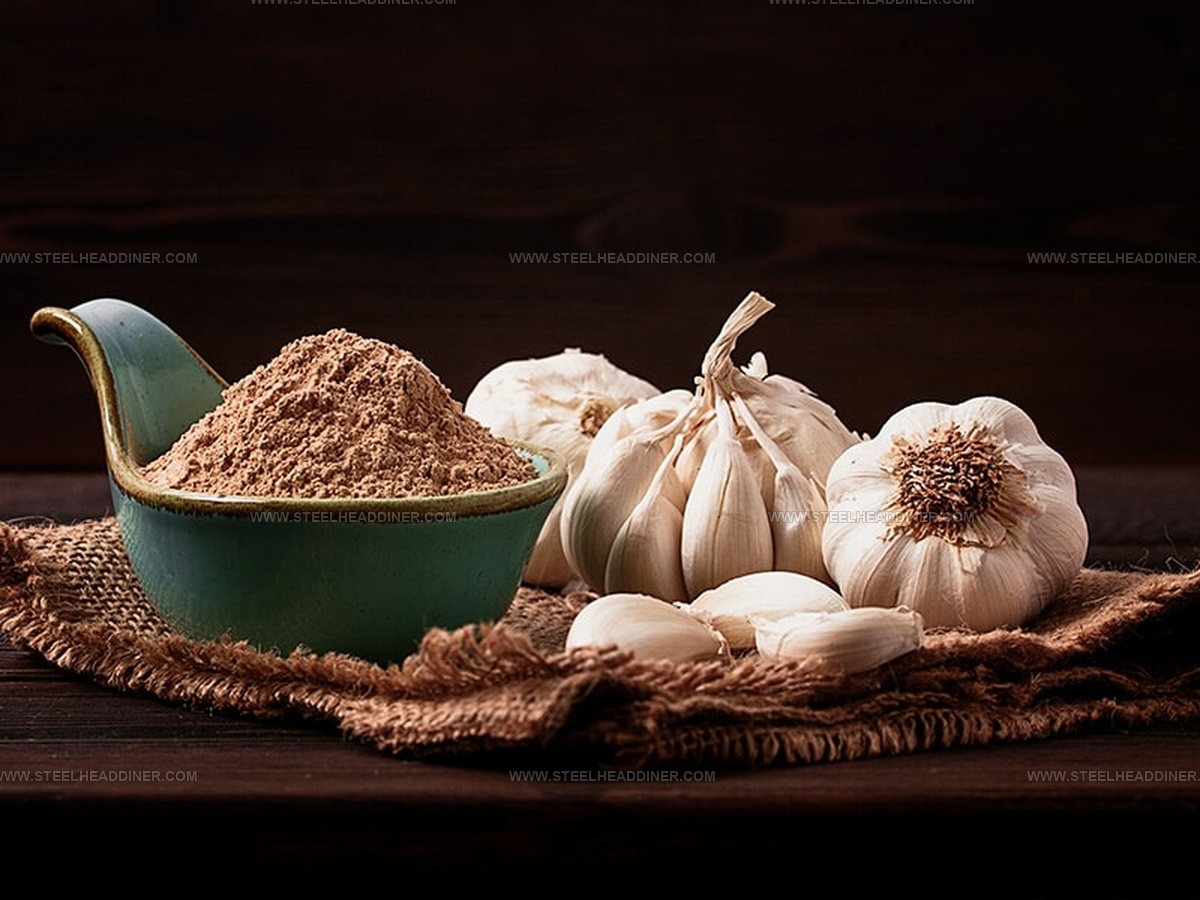
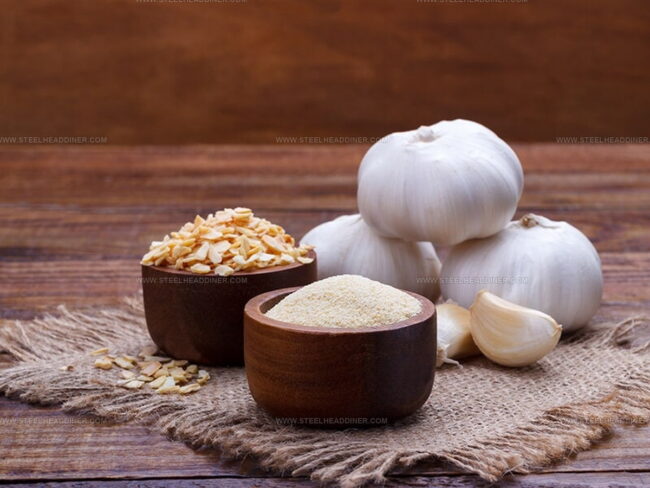
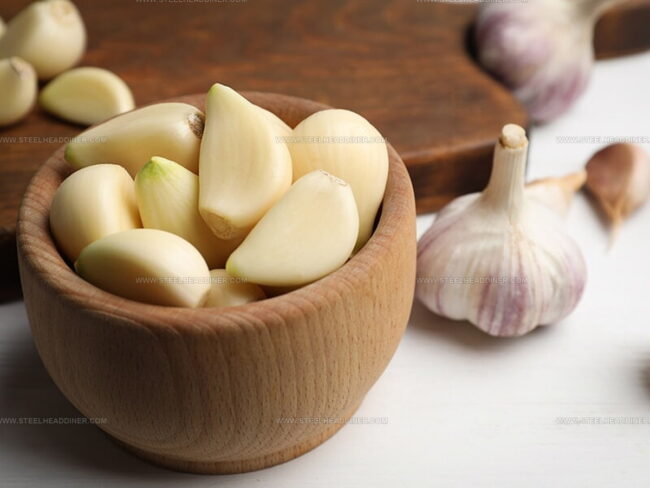
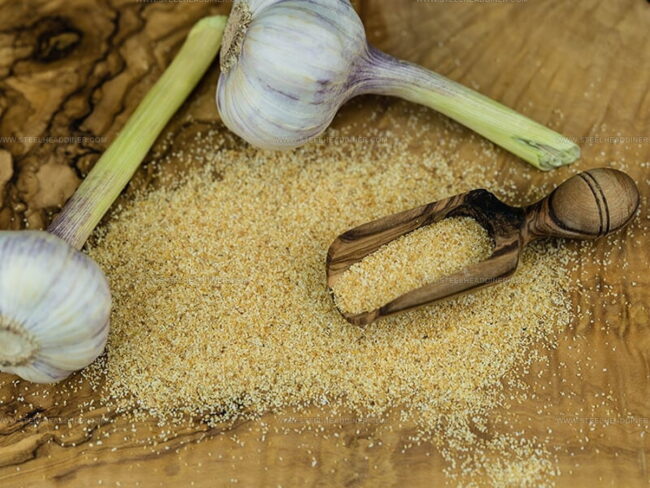
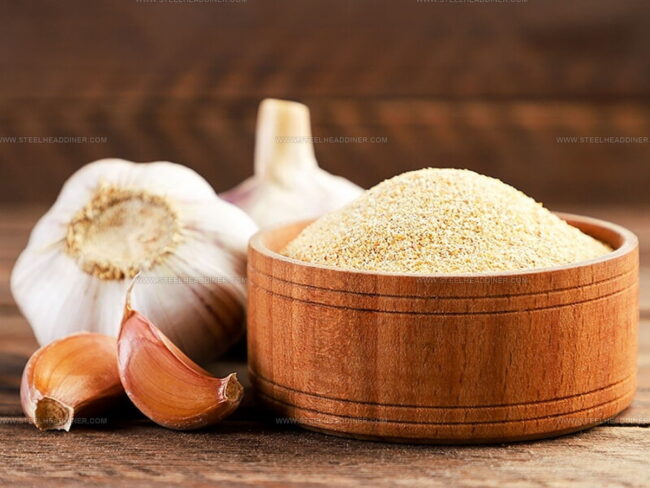
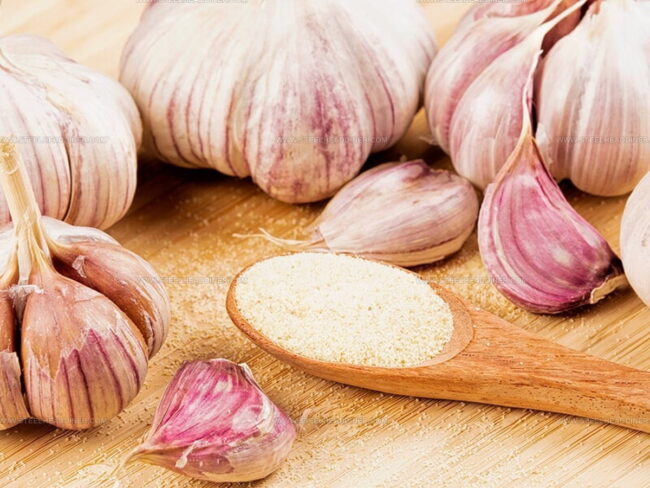
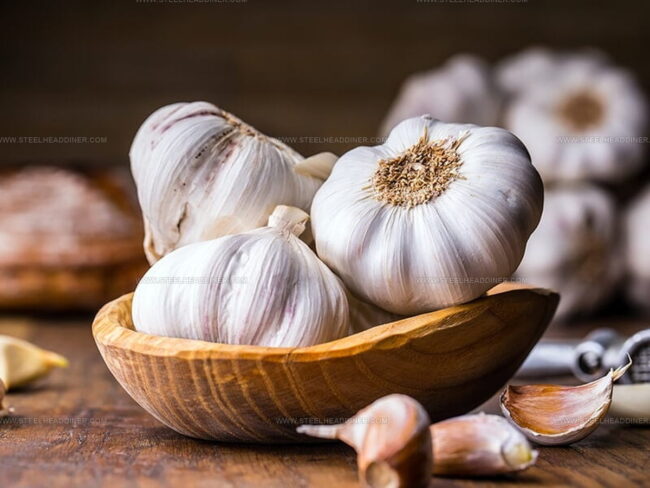
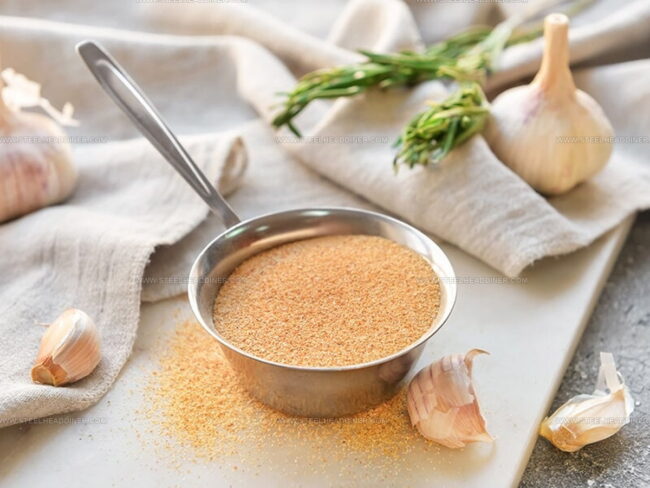
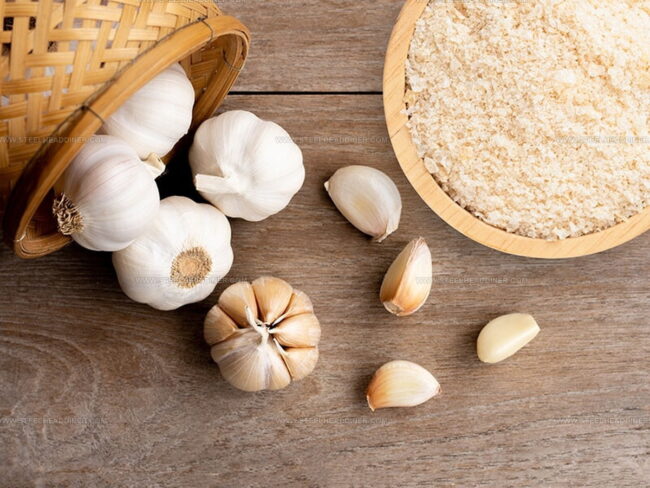
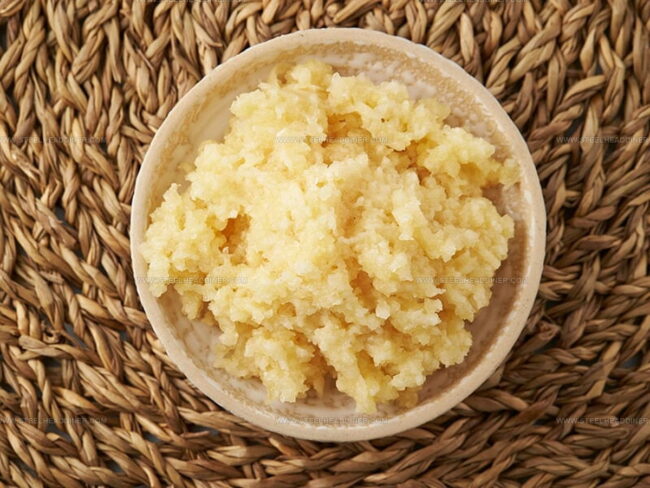
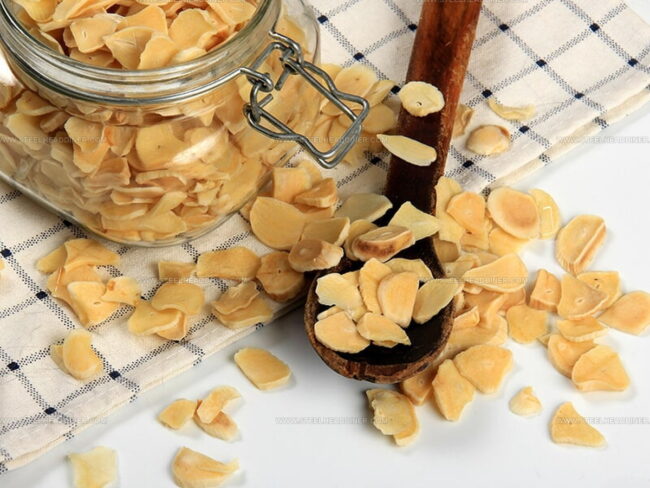
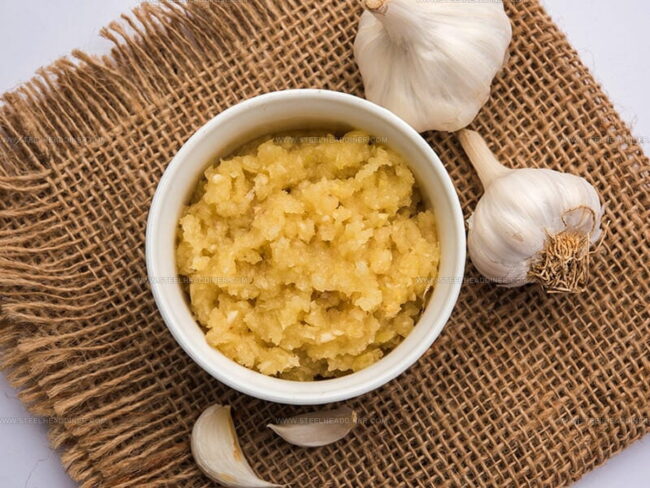
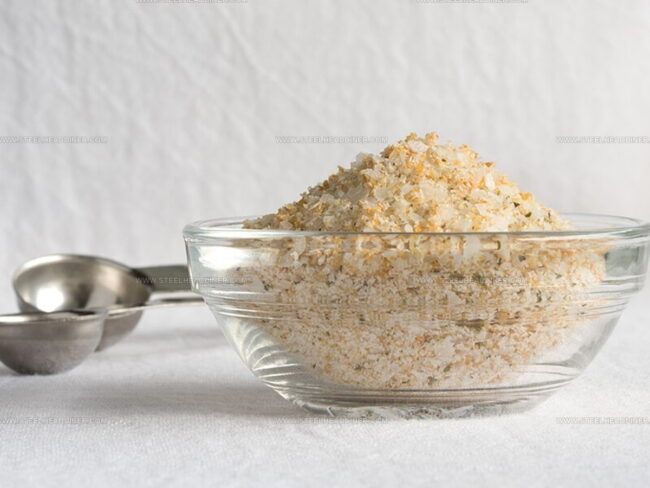

Maya Thompson
Culinary Content Creator & Nutrition Enthusiast
Expertise
Healthy single-serving recipes, Meal prepping for individuals, Integrating nutrition into everyday cooking, Vegetarian and plant-based cuisine
Education
The Chef’s Academy at Harrison College
Associate of Applied Science in Culinary Arts
Focus: Nutrition, meal planning, and culinary techniques for healthy living.
Maya found her passion in the kitchen by mixing good food with good energy. After earning her culinary degree at The Chef’s Academy at Harrison College, she made it her mission to keep cooking simple, wholesome, and packed with flavor.
At Steelhead Diner, Maya shares easy, healthy recipes built for real life. For Maya, great food seems like a celebration of everyday moments, made better one fresh bite at a time.